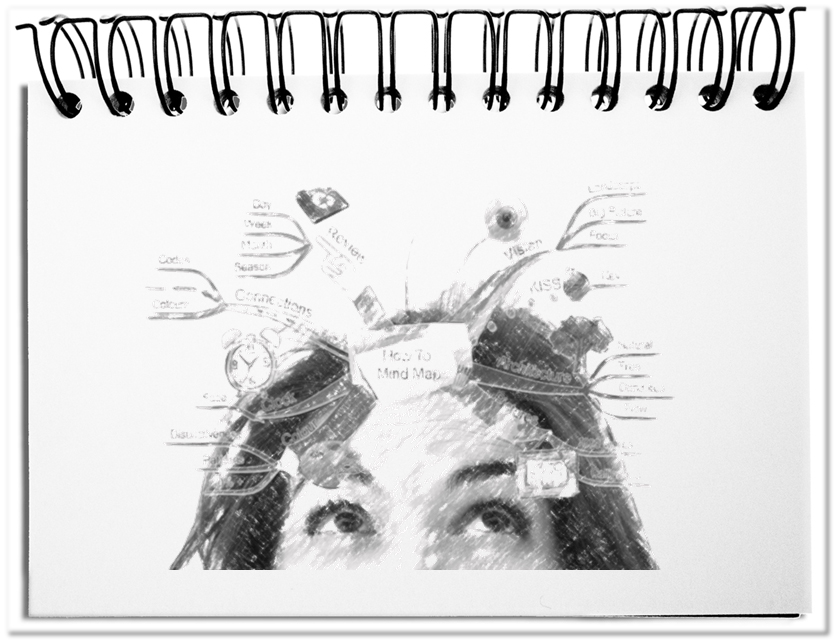In the past, we were prepared for our professional life by learning reading and writing, basic arithmetic and geometry, music, art and sport in ex-cathedra teaching. Group work and business exercises or computers and visualizations were rarely used. An example of an approach is the Mind map. All kinds of ideas, structures and sketches can be created: e.g. brainstorming’s, strategies, goal hierarchies, business developments, project plans, minutes, problem solutions, speeches, time management, etc. The efficacy of Mind mapping can be multiplied by using IT-based tools such as Mindmanager, XMind, iMindMap, iThoughts and others.
In addition to the tips and tricks, the internet also provides rules for mind mapping. The following suggestions are primarily intended to enable the use of IT tools.
- Anything goes
Actually when you create your mind map with an IT program, all the common rules are
no longer necessary. The now realizable size exceeds the limits of a sheet of paper by far. This also applies to the number of branches and the number of detail levels as well as to the labels and other media (see below). The development of a mind map can be done on your own or in a team by using a beamer or large video screen, or even in virtual videoconferences with worldwide distributed participants. Depending on the number of participants, the effort for the coordination of the branches of the resulting map increases. - Use the media
Whereas one is conventionally limited to writing, drawing and gluing images in paper-based mind maps, one can use a wide variety of multimedia objects to integrate them in a tool-based way – texts, images, videos, links, office files, etc. - Any contribution counts
If one works on paper, then the rework, i.e. above all the simplification, is somewhat complicated. In an IT-based mind map, the branches can be reassigned as required, including all sub-branches attached to them. This supports the usual brainstorming approach of simply capturing each post without discussion. That way maps can be developed in separate working groups. The final incorporation creates an aligned, joined result. - Be aware of your gut feeling
A practical feature is the subsequent arrangement of the branches. The graphical presentation supports thereby the intuitive editing of the content. You can move branches into others and get inspired by the new formation. Visual thinking does not simply follow conscious logic. Through the graphical structure, the subconscious mind assists in the alignment. In the interest of a skillful result you should always listen to your gut feeling, even if you cannot always understand the reasoning behind. - Keep on going
Software tools live on their juncture to the world. The Mindmanager offers connectivity to Microsoft products, for example: MS-Excel, MS-Word, MS-PowerPoint and even MS-Project. This means that the captured content can continue to be used in the sequence. Thus, the activities of a project, including dates and dependencies, can be planned with the Mindmanager and then transferred to the MS-Project format.
Bottom line: Tool-supported mind mapping, like Mind map 2.0, expands the use of this approach. This allows the multi-medial creation of mind maps of any size. At the same time, open approaches for the development can be used and sub sequentially integrated to a coherent overall picture. With the graphic representation the subconscious areas of thinking are also used. Eventually, all the results can be reused in classic office tools. Thus, Mind map 2.0, i.e. the use of software-supported mind mapping, multiplies the efficacy of the mind mapping.

